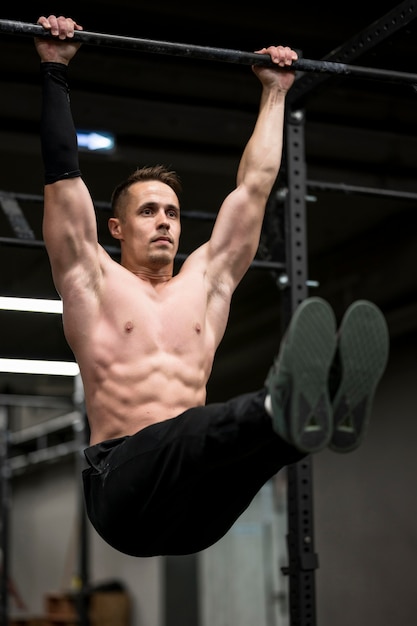The fitness world is packed with countless exercises, each aimed at specific muscles and offering unique advantages. One standout is the Dumbbell Calf Raise. Also known as the Standing Calf Raise with Dumbbell, this versatile exercise strengthens lower leg muscles and enhances balance and flexibility. Let’s dive into its variations, proper execution, and the muscles it works.
Understanding the Dumbbell Calf Raise
The Dumbbell Calf Raise is popular for its simplicity and effectiveness. It mainly targets lower leg muscles, helping to boost strength, balance, and flexibility.
Execution of the Exercise
To start the Dumbbell Calf Raise, stand on a step with your forefoot positioned so your heel won鈥檛 touch the ground during the exercise. Keep your knees and hips extended while holding a dumbbell in one hand. Use your other hand to stabilize yourself, ideally by holding onto something firm.
The exercise involves lifting your heel upward, performing a full plantar flexion, which elevates your body in a straight line.
Variants of the Exercise
This exercise has several variations that offer similar benefits. Alternatives include using a Standing Calf Machine or trying a running version called the Calf Laughed with Dumbbell. Each variant provides its own challenges and benefits.
Muscles Targeted by the Dumbbell Calf Raise
The Dumbbell Calf Raise is well-loved for its comprehensive engagement of various muscle groups.
Prime Movers
These muscles do most of the work. They include the Gastrocnemius, Soleus, Peroneus Brevis, Posterior Tibialis, Flexor Digitorum Longus, and the Posterior Flexor of the Big Toe. They’re mainly involved in plantar flexion, pushing the foot downwards.
Support Muscles
These muscles offer stability and assistance during the exercise. They include the Peroneus Longus, Lumbricals, Interossei, Hallucis Abductor, Abductor of the Fifth Finger, and the Plantar square. These muscles help in intertarsal flexion, which involves bending the foot at the tarsal bones.
Secondary Movers
These muscles assist but are not the main ones performing the action. They include the Flexor Digitorum Brevis, Flexor Hallucis Longus, and Flexor Hallucis Brevis. These muscles are involved in metatarsophalangeal flexion, which is the bending of the toes.
The Role of Stabilizing Muscles
In addition to the primary, secondary, and support muscles, there are stabilizing muscles at play during the Dumbbell Calf Raise. These muscles help keep various parts of the body stable, including the spine, scapula, shoulder, elbow, grip, hip, knee, ankle, and foot. This stability is crucial for maintaining balance and form during the exercise.
Conclusion
The Dumbbell Calf Raise is a versatile and effective exercise that works a variety of muscles in the lower leg. Whether you’re a seasoned athlete or a fitness newcomer, adding this move to your routine can offer numerous benefits. With its variations and the involvement of multiple muscle groups, the Dumbbell Calf Raise provides a thorough workout for improving strength, balance, and flexibility.







